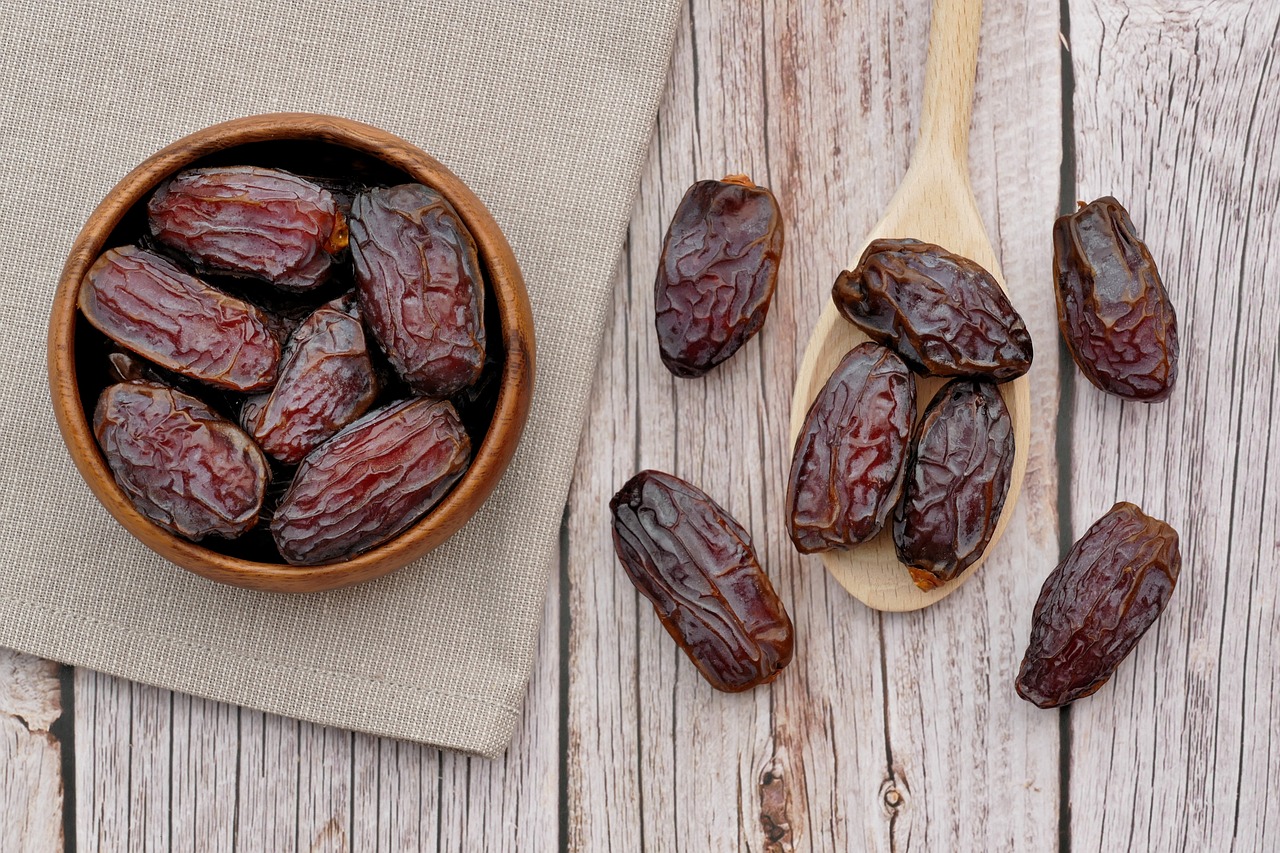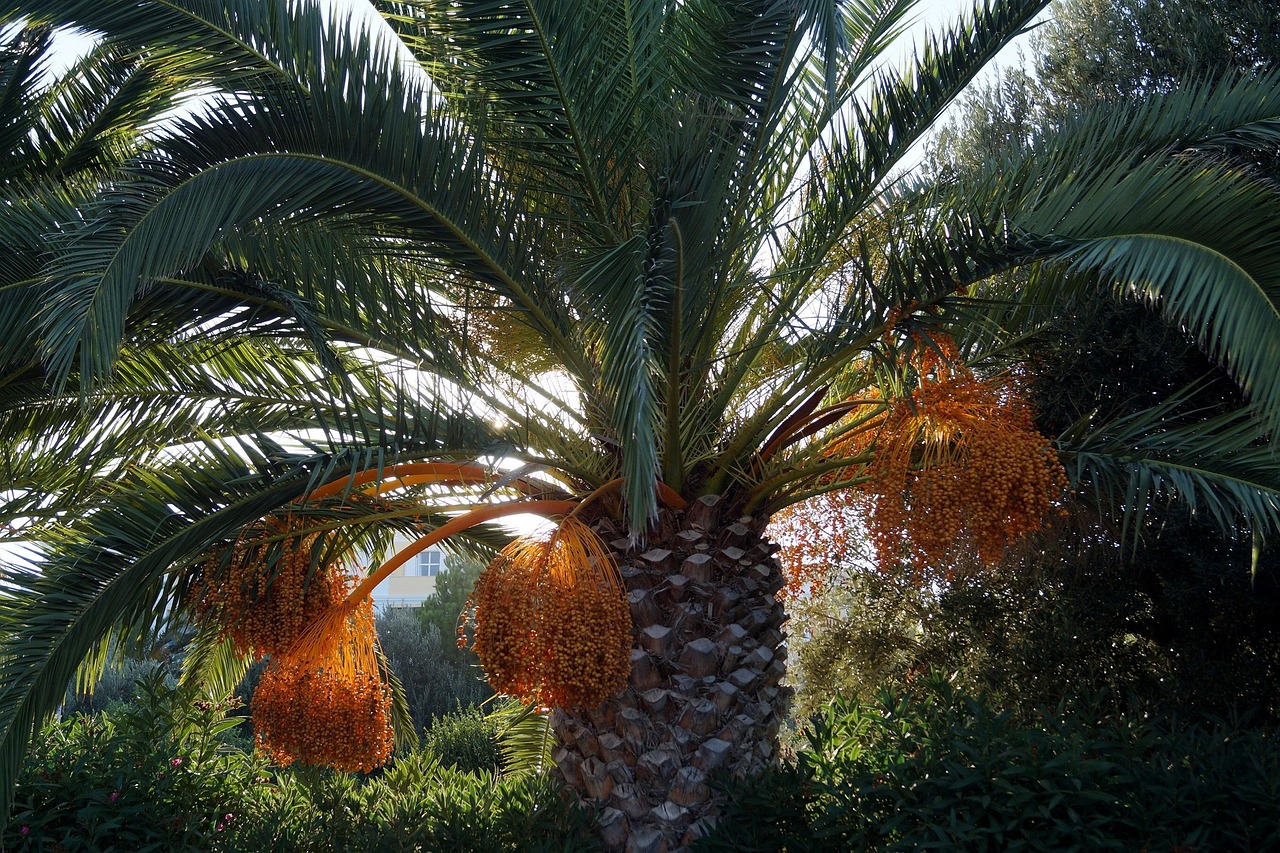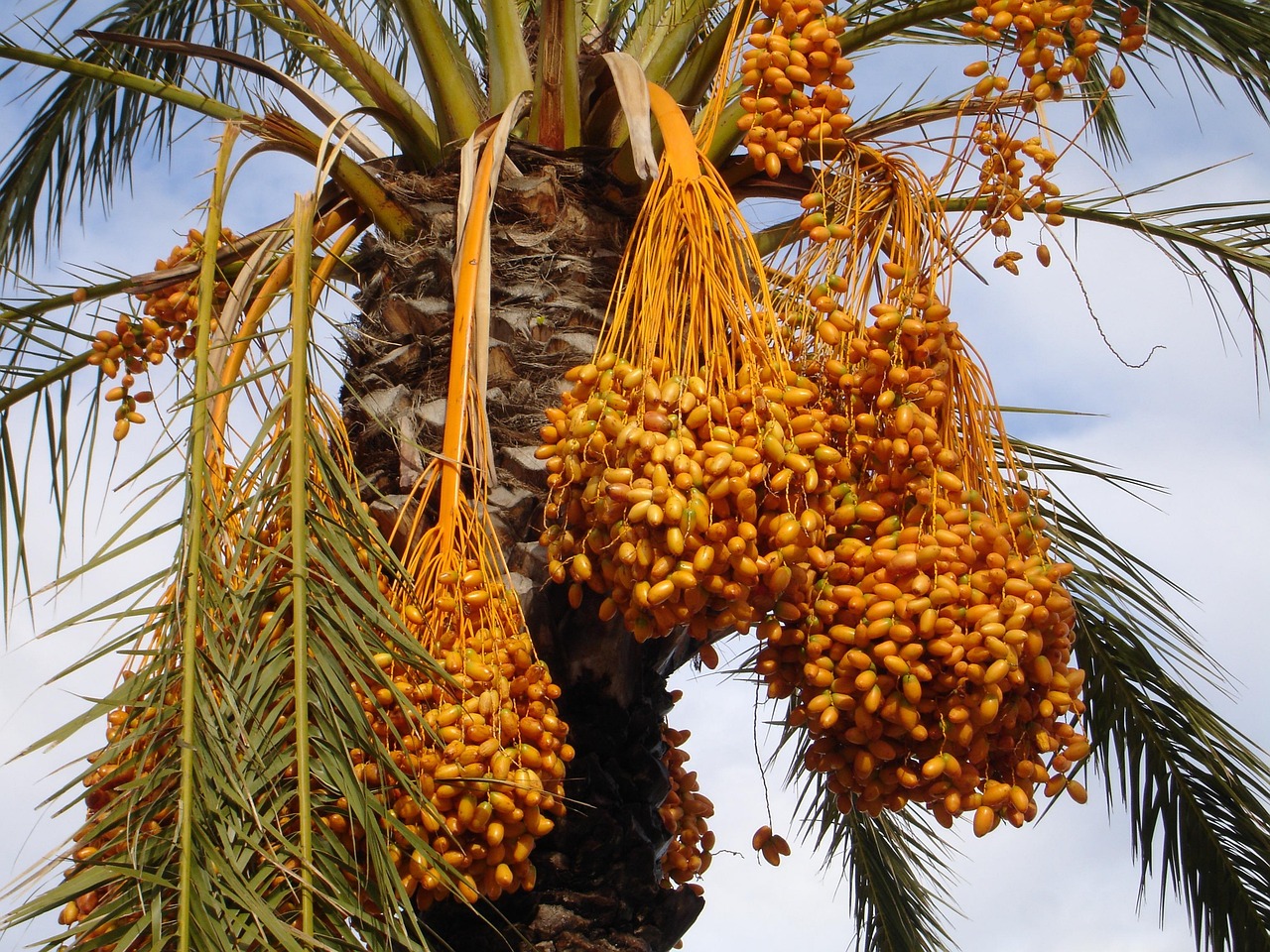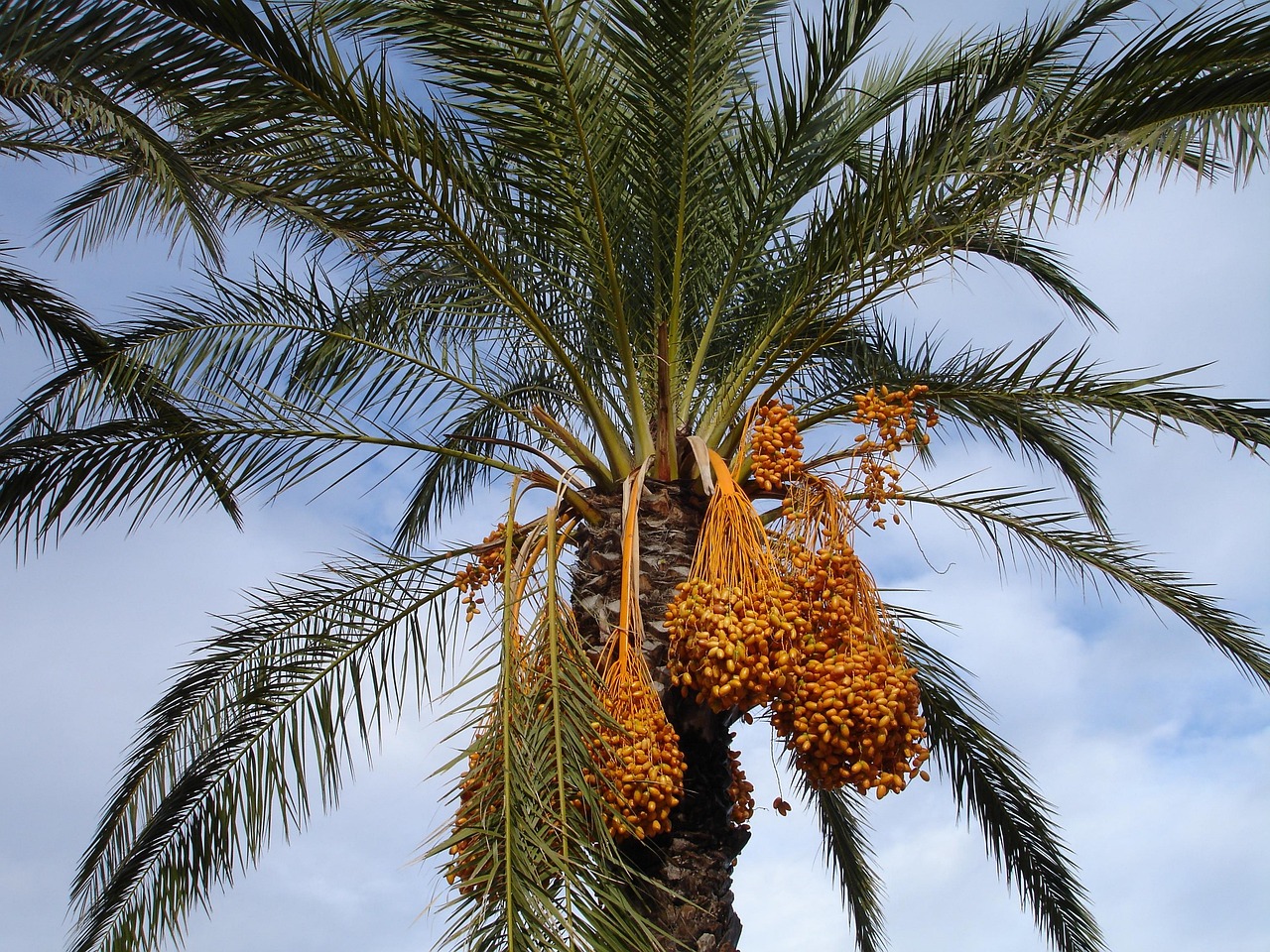Date palm pruning is essential for maintaining healthy trees and enhancing the aesthetic appeal of eco-tourism areas and resorts. Regular pruning improves fruit quality, promotes growth, and ensures safety for visitors by removing dead fronds and potential hazards.
Date palms are iconic trees that thrive in arid regions. They are not just vital for their fruit but also play a significant role in the landscape of eco-tourism areas. These majestic trees often symbolize the rich cultural heritage of the regions where they grow. Pruning is crucial for their health, longevity, and productivity, particularly in settings that attract tourists.

In eco-tourism areas, the appearance of date palms can significantly impact visitor experience. Well-maintained palms contribute to an inviting atmosphere. Proper pruning practices can enhance the visual appeal of resorts, parks, and other tourist attractions. Regular maintenance also helps in preventing pest infestations and diseases that can spread to other plants.
Importance of Date Palm Pruning
Date palm pruning serves multiple purposes. It not only supports tree health but also enhances safety and aesthetics. Here are some key benefits of proper pruning:
- Health Maintenance: Pruning removes dead or diseased fronds, allowing the tree to focus energy on healthy growth.
- Improved Fruit Quality: By removing excess fronds, the tree can allocate resources to producing higher-quality dates.
- Enhanced Safety: Removing dead fronds prevents them from falling and posing risks to visitors.
- Visual Appeal: A well-pruned palm enhances the overall look of eco-tourism sites, attracting more visitors.
- Pest Control: Regular pruning helps reduce the risk of pests and diseases that could harm the trees.
The ideal time for date palm pruning typically occurs before the growing season. This timing allows for optimal recovery and encourages new growth. Depending on the region and climate, this can vary but generally falls between late winter and early spring.

Pruning date palms requires specific techniques to ensure that the trees remain healthy. A few important practices include:
- Assessing the Tree: Before pruning, evaluate the palm’s condition. Look for dead or damaged fronds that need removal.
- Using Proper Tools: Ensure that you use sharp and clean tools to make precise cuts, minimizing damage to the tree.
- Removing Dead Fronds: Start by cutting off any dead or yellowing fronds. This helps improve air circulation around the tree.
- Avoiding Over-Pruning: It is crucial not to remove too many fronds at once. Over-pruning can stress the tree and reduce its productivity.
Best Practices for Pruning Date Palms
To achieve the best results when pruning date palms, consider the following best practices:
- Safety First: Always wear protective gear, including gloves and goggles, while pruning.
- Angle Your Cuts: Make cuts at an angle to encourage water runoff and prevent rot.
- Monitor Growth: After pruning, observe the tree’s growth and health. Adjust future pruning schedules based on its recovery.
Maintaining a regular pruning schedule is vital for sustaining healthy date palms in eco-tourism areas. Many resorts implement annual or semi-annual inspection and pruning programs. This practice not only keeps the trees healthy but also ensures that they remain a central feature of the landscape.

In addition to aesthetic benefits, properly pruned date palms can also serve as a habitat for local wildlife. Birds often nest in the fronds, contributing to biodiversity in these regions. Therefore, preserving healthy palm trees supports both tourism and local ecosystems.
When planning eco-tourism activities, consider incorporating workshops or demonstrations on date palm care. Educating visitors about the importance of these trees can enhance their experience and promote environmental awareness.
Conclusion
Date palm pruning is an essential practice that impacts both the health of the trees and the overall appeal of eco-tourism areas and resorts. By understanding its importance and implementing best practices, resort managers can ensure these iconic trees thrive for generations to come.

Techniques for Effective Date Palm Pruning
Understanding the techniques for effective date palm pruning is essential for maintaining the health and aesthetic appeal of these trees in eco-tourism areas. Employing the right methods ensures that the palms thrive while also minimizing the risk of disease and pest infestations.
Identifying the Right Time to Prune
Timing is crucial when it comes to pruning date palms. The best time to prune is usually in late winter or early spring, just before the growing season begins. This allows the tree to recover quickly and promotes new growth. However, it’s also important to monitor local climate conditions, as they can affect the ideal timing.
- Late Winter to Early Spring: Ideal for most regions as trees are still dormant.
- Avoid Pruning During High Heat: Pruning during extreme heat can stress the tree and lead to further complications.
Essential Tools for Pruning
Having the right tools is vital for effective pruning. Proper equipment ensures clean cuts and reduces the risk of injury to both the pruner and the tree. Here are some essential tools:
- Hand Pruners: Ideal for smaller fronds and detailed work.
- Loppers: Useful for removing larger fronds that are out of reach.
- Saws: Needed for cutting thicker branches or trunks.
- Gloves and Safety Goggles: Protect hands and eyes from debris.
Pruning Techniques
There are several techniques that can be employed during the pruning process. Each method has its purpose and can contribute to the overall health of the date palm.
- Removing Dead Fronds: Start by cutting away any dead or yellowing fronds at their base. This helps improve air circulation and reduces the risk of pests.
- Thinning Out Excess Growth: Remove fronds that are too dense, which may inhibit light penetration and airflow.
- Shaping the Palm: Trim fronds to maintain a balanced shape. This not only enhances aesthetics but also ensures that the palm can withstand strong winds.
Pest Management During Pruning
Pest management should be a priority when pruning date palms. Certain pests can thrive in improperly maintained palms, potentially spreading diseases. Here are some common pests and management strategies:
| Pest | Description | Management Strategy |
|---|---|---|
| Red Palm Weevil | A destructive pest that burrows into the trunk. | Monitor trees regularly and use traps to capture adults. |
| Mealybugs | Small, white insects that suck sap from fronds. | Apply insecticidal soap or neem oil as needed. |
| Scale Insects | Sticky insects that can weaken the tree significantly. | Use horticultural oil to suffocate them on contact. |
When pruning, inspect each palm thoroughly for signs of infestation. Early detection is key to managing pest populations effectively. Implementing an integrated pest management (IPM) approach can also reduce reliance on chemical treatments, promoting a healthier environment.
The Role of Date Palms in Eco-Tourism
Date palms do not only serve aesthetic purposes; they play a significant role in enhancing eco-tourism experiences. Their presence can provide cultural, ecological, and economic benefits to tourist destinations.
Cultural Significance
Date palms have deep cultural roots in many regions. They are often associated with traditional practices, culinary uses, and historical significance. Incorporating educational tours about these aspects can enrich visitor experiences.
- Culinary Uses: Dates are a staple food in many cultures and can be featured in local cuisine.
- Traditional Crafts: Fronds can be used for weaving baskets, mats, and other handicrafts.
- Cultural Festivals: Celebrating harvesting seasons can attract visitors interested in local traditions.
Ecological Benefits
Date palms contribute significantly to local ecosystems. They provide habitat for various species, support biodiversity, and improve soil health through their root systems. Planting more date palms can help mitigate desertification in arid areas.
Economic Impact
Date palms can have a positive economic impact on local communities through eco-tourism. The following points highlight their importance:
- Attracting Tourists: Well-maintained date palm groves can draw visitors seeking unique experiences.
- Supporting Local Businesses: Increased tourism can benefit local restaurants, shops, and artisans.
- Employment Opportunities: Pruning and maintaining date palms can create jobs within the community.
The integration of date palms into eco-tourism strategies can enhance both visitor experiences and local economies. By focusing on sustainable practices, resorts can ensure that these trees continue to thrive while benefiting their surroundings.
Challenges in Date Palm Pruning
While date palm pruning is vital for maintaining the health and appearance of these trees, several challenges can arise. Understanding these challenges can help resort managers and eco-tourism operators develop effective strategies to mitigate them.
Environmental Factors
Environmental conditions can significantly impact the pruning process and the overall health of date palms. Some common environmental challenges include:
- Climate Variability: Changes in temperature and rainfall can affect the growth patterns of date palms. Extreme weather events can also damage fronds and weaken the trees.
- Pest Outbreaks: Warmer temperatures may lead to increased pest populations that can complicate pruning efforts.
- Soil Quality: Poor soil conditions can hinder the growth of date palms. Pruning without addressing soil health may not yield the best results.
Labor and Expertise
Finding skilled labor for pruning can be a challenge, especially in regions where date palms are not as common. The following factors contribute to this issue:
- Lack of Training: Many workers may not have the necessary training or experience in proper pruning techniques, leading to potential harm to the trees.
- Seasonal Labor Constraints: Pruning is typically seasonal, which may limit the availability of workers during peak times.
- Safety Risks: Pruning tall palms can pose safety risks. Workers must use proper equipment and techniques to avoid accidents.
Sustainable Practices in Date Palm Management
Implementing sustainable practices in date palm management is essential for ensuring long-term health and productivity. These practices not only support eco-tourism but also contribute to environmental conservation.
Organic Pest Control Methods
Resorts and eco-tourism operators can adopt organic pest control methods to maintain healthy date palms without using harmful chemicals. Some effective organic strategies include:
- Naturally Occurring Predators: Encourage beneficial insects such as ladybugs and lacewings that feed on pests.
- Neem Oil: This natural pesticide can effectively control a variety of pests while being safe for the environment.
- Companion Planting: Planting certain plants near date palms can deter pests naturally.
Water Conservation Techniques
Date palms require a specific amount of water for optimal growth. Implementing water conservation techniques can help manage resources effectively:
- Drip Irrigation: This method delivers water directly to the root zone, reducing waste and promoting healthier growth.
- Mulching: Applying organic mulch around the base of date palms helps retain moisture and regulates soil temperature.
- Rainwater Harvesting: Collecting rainwater for irrigation can reduce reliance on groundwater and create a sustainable water source.
Soil Improvement Practices
Healthy soil is essential for the success of date palms. Implementing soil improvement practices can enhance growth and fruit quality:
- Composting: Adding organic matter to the soil improves its structure and nutrient content.
- Cover Crops: Planting cover crops can prevent soil erosion and increase soil fertility.
- Soil Testing: Regularly testing soil allows for tailored amendments that improve specific nutrient deficiencies.
The Future of Date Palm Pruning in Eco-Tourism
The future of date palm pruning in eco-tourism areas looks promising as awareness about sustainable practices grows. Innovations in technology and community engagement will play key roles in shaping this future.
Technological Innovations
The incorporation of technology into date palm management can streamline processes and improve outcomes. Some potential innovations include:
- Drones: Drones can be used for aerial assessments of tree health, allowing for better planning of pruning activities.
- Sensors: Soil moisture sensors help monitor irrigation needs accurately, preventing over or under-watering.
- Mobile Apps: Applications designed for agricultural management can assist in scheduling pruning and tracking pest outbreaks.
Community Involvement and Education
Engaging local communities in the care of date palms fosters a sense of ownership and responsibility. Educational programs can enhance knowledge about sustainable practices:
- Workshops: Hosting workshops on pruning techniques and pest management can empower locals with skills needed for effective maintenance.
- Cultural Events: Organizing events that celebrate date palm harvesting and care can strengthen community ties.
- Collaboration with Schools: Partnering with local schools to teach students about agriculture and ecology can inspire future generations.
The integration of these innovative practices will enhance the sustainability and appeal of eco-tourism areas, ensuring that date palms continue to thrive while providing economic benefits to local communities. By embracing change and fostering community involvement, eco-tourism operators can create a positive impact on both the environment and the economy.
Innovative Approaches to Date Palm Care
As eco-tourism continues to grow, innovative approaches to date palm care are emerging. These approaches not only enhance the sustainability of date palm cultivation but also improve the overall visitor experience. By leveraging new ideas and technologies, eco-tourism operators can maximize the benefits of date palms.
Agro-Tourism Opportunities
Agro-tourism is an excellent way to engage visitors while promoting sustainable practices. By integrating date palm cultivation into tourism activities, resorts can offer unique experiences:
- Harvesting Tours: Allowing guests to participate in the harvest provides a hands-on experience and educates them about the significance of date palms.
- Tasting Events: Hosting events where visitors can sample different varieties of dates can highlight local agriculture and create memorable experiences.
- Workshops on Traditional Uses: Educating visitors about how date palms are used in local crafts and cuisine adds cultural depth to their stay.
Research and Development
Ongoing research into the best practices for date palm cultivation and pruning is crucial. Collaborations between universities, agricultural organizations, and eco-tourism operators can lead to advancements such as:
- Improved Varieties: Research can focus on developing date palm varieties that are more resilient to pests and climate changes.
- Pruning Techniques: Studies on optimal pruning times and methods can enhance tree health and fruit quality.
- Sustainable Practices: Investigating new organic pest control methods and soil improvement strategies can contribute to better environmental outcomes.
The Role of Technology in Date Palm Management
Technology is playing an increasingly important role in managing date palms. From monitoring tree health to improving irrigation practices, technology offers various solutions:
Remote Monitoring Systems
The implementation of remote monitoring systems can provide real-time data on factors affecting palm health:
- Soil Moisture Sensors: These devices help monitor soil moisture levels, allowing for precise irrigation practices that conserve water.
- Drones: Drones equipped with cameras can survey large areas, identifying issues such as pest infestations or nutrient deficiencies.
- Mobile Applications: Apps designed for agricultural management can assist in scheduling maintenance tasks and tracking tree health over time.
Community Engagement Through Technology
Technology can also foster community engagement. Initiatives that encourage locals to use apps for reporting tree health issues or pest outbreaks can create a sense of responsibility:
- Crowdsourced Data Collection: Locals can contribute data on palm health, which can be analyzed to identify trends and inform management decisions.
- Online Learning Platforms: Providing access to online courses about date palm care can empower communities with knowledge and skills.
Final Thoughts
Date palm pruning is a critical practice that benefits eco-tourism areas and resorts in numerous ways. By ensuring the health and beauty of these iconic trees, eco-tourism operators can create inviting environments that attract visitors while supporting local ecosystems and economies. The integration of sustainable practices, community engagement, and technological innovations will play a significant role in the future of date palm management.
Ultimately, fostering an appreciation for date palms among tourists can enhance their experiences and promote environmental stewardship. As we move forward, it is essential to continue exploring innovative approaches to care for these trees, ensuring they remain a vital part of the landscape for years to come. By investing in education, sustainable practices, and community involvement, eco-tourism areas can thrive alongside their date palms, creating a harmonious relationship that benefits all.
By understanding the importance of date palm pruning and care, we contribute not only to the preservation of these magnificent trees but also to the ecological and economic vitality of the regions they inhabit. This holistic approach will ensure that date palms continue to flourish in eco-tourism settings while providing numerous benefits to both visitors and local communities.
